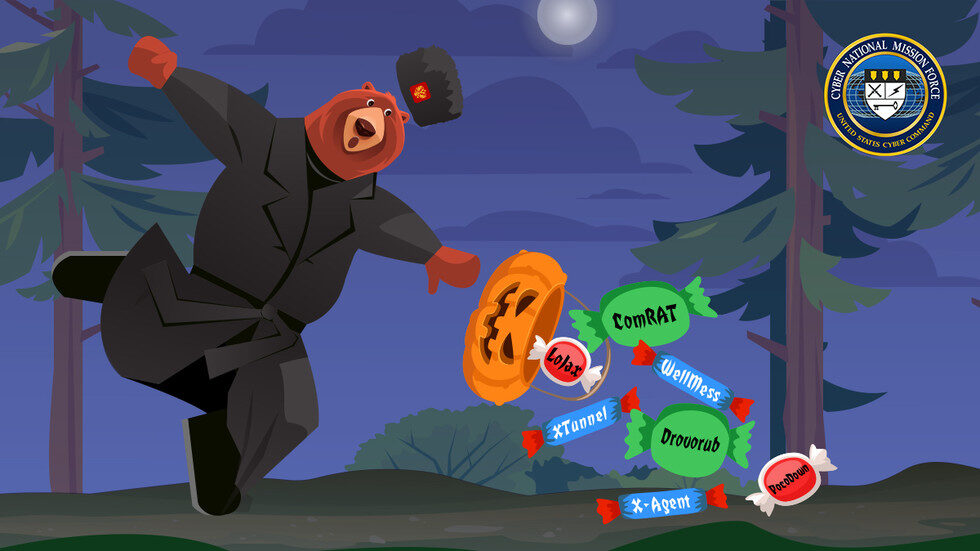
© Twitter / CNMF_CyberAlert
An uninspired cartoon commissioned by the Pentagon that attempted to throw shade at Moscow required weeks to complete, documents have revealed, shining a light on how the US military goes about its creative endeavors.
On October 29, 2020, the US Cyber Command's Cyber National Mission Force posted a "meme" to Twitter showing a bear wearing a Russian ushanka. Apparently in a nod to Halloween, the cartoon animal is seen tripping as he drops his trick-or-treat basket, spilling candies labeled with the names of malware programs allegedly used by Russia.
While the image itself is rather prosaic, the process used to create it was nothing short of a bureaucratic masterpiece.
A Freedom of Information Act request filed by Runa Sandvik, a senior adviser for Norway's Armed Force Cyber Defence, unearthed 23 pages of emails and other documents related to the cartoon.In a heavily redacted message dated October 7, a proposal is put forward to make the public aware of several types of malware.
After prolonged brainstorming, the meme entered its second phase on October 20, when graphic designers working for the command received orders to create three cartoons. Details about the first image are completely redacted, but the second and third reveal the concept that was later approved and posted to Twitter.
"Graphic concept: Cartoon bear in soviet uniform costume holding Halloween candy basket with malware names," the email read. The second meme was identical, only the bear would be "tripping with 'treats' (malware names) spilling out of the candy basket."The bigwigs at the Pentagon ultimately decided on the tripping-ushanka-bear variant, and a new 'meme' was born.
In November, the cartoon caught the eye of CyberScoop, an outlet that focuses on cybersecurity, which wrote an article about the command's use of "silly graphics" to clap back at Washington's cyber nemeses. An unnamed US official cited in the piece said that they wanted to create images that "avoid giving the Russian hackers an ego boost."
Responding to the article in an internal email, the command noted that, while the piece was "a bit tongue and cheek," it was "mostly accurate."
In a bullet-point list, the email explained that graphics should be used to "increase engagement and resonate within the Cybersecurity industry." The author of the email conceded, however, that "the graphics may not be shaping adversary behavior."
At the time of writing, the tweet in question has received 200 retweets and 285 likes. But the graphic itself doesn't seem to have impressed meme connoisseurs.
"The Pentagon is bad at making memes, but it still tries," concluded Vice, in its writeup of the story.

What's there to fact check? USA Today covers for Biden Press Secretary Jen Psaki wearing a hammer-and-sickle hat
Anyone wondering how protective the legacy media will be of Joe Biden's incoming administration got a good indication on Tuesday, when USA Today fact-checked a photo of his Press Secretary Jen...